Leendert Van Accoleyen (b. 1991, Aalst) reaches for the impossible in his art, defying gravity with constructions that elevate large and heavy objects into the air. His work, marked by the tension between human vulnerability and the grandiosity of his creations, taps into the strength of nature, akin to the delicate balance observed in a honeybee's interaction with flowers.
Leendert Van Accoleyen is an artist whose artistic practice cannot be separated from his personal life. He creates sculptural installations using various materials such as reclaimed wood, bricks, and metal, among others. He lives a nomadic lifestyle, often residing in his car, on a boat, or in his studio.
Collaboration is a key element of Van Accoleyen's practice, and he works closely with the people he cares most about, often relying on their help and generosity to realize his ideas. His work represents a critical train of thought that examines common understandings of socio-spatial realities. Van Accoleyen's work has been exhibited in galleries and public spaces in Belgium and beyond, and he has received several awards and grants for his practice. His work is part of the collection of the Muhka and many private collections.
☞ insta leendert
website: www.leendertvanaccoleyen.com
“Voor Dragend En Niet Dragend Metselwerk” 2022
ENG In the pursuit of urban solutions for 'safe' shelters, Van Accoleyen sought refuge within the public realm—havens for those in need, camouflaged discreetly. "The most inconspicuous forms I discovered in my research were those of construction sites and temporary public space interventions."
This exploration materialized into the exhibition 'For Bearing and Non-Bearing Masonry' where Van Accoleyen cast a mold of a pallet of bricks. This negative mold was employed to craft a fiberglass mock-up (positive) model of the brick pallet. The interior is consequently hollow and designed to meet the basic needs of a shelter.
Consideration was given to functionality, comfort, and lockability in the design. Isolated and equipped with a bed, a small workshop, storage, greywater disposal, and heating, the object stands as an antithesis to the rise of hostile architecture. This sculpture invites activation—a social sculpture, both radical and utopian.
NL Van Accoleyen was
op zoek naar een stedelijk antwoord voor ‘veilige’ onderkomens voor hen die het nodig hebben. Schuilplekken in de openbare ruimte. Hierin werd het belangrijk om een juiste ‘vermomming’ te vinden.
“De meest onopvallende vormen die ik in mijn onderzoek ontdekte waren net deze van de bouwwerven en tijdelijke innames openbare ruimte.”
Hieruit is de tentoonstelling ‘voor dragend en niet dragend metselwerk’ ontstaan. Van Accoleyen maakte een afgietsel van een pallet bouwstenen. Dit afgietsel werd als mal (negatief) gebruikt om uit glasvezel een mock-up (positief) model van de pallet bakstenen te maken. De binnenkant is bijgevolg hol en ingericht om aan de basisbehoeften van een schuilplek te voldoen.
Bij de vormgeving is er nagedacht over de functionaliteit, het comfort en afsluitbaarheid. Het object is geïsoleerd en beschikt over een bed, een kleine werkplaats, opslagmogelijkheid, afvoer grijs water en verwarming. Het is te lezen als een antitheses voor de opmars van hostile architecture (architecturale ingrepen die als doel hebben plekken die als potentiële schuil of slaapplaats voor daklozen onbewoonbaar te maken). Dit sculptuur is een uitnodiging tot activatie. Het is een sociaal sculptuur, radicaal en utopisch.
“De meest onopvallende vormen die ik in mijn onderzoek ontdekte waren net deze van de bouwwerven en tijdelijke innames openbare ruimte.”
Hieruit is de tentoonstelling ‘voor dragend en niet dragend metselwerk’ ontstaan. Van Accoleyen maakte een afgietsel van een pallet bouwstenen. Dit afgietsel werd als mal (negatief) gebruikt om uit glasvezel een mock-up (positief) model van de pallet bakstenen te maken. De binnenkant is bijgevolg hol en ingericht om aan de basisbehoeften van een schuilplek te voldoen.
Bij de vormgeving is er nagedacht over de functionaliteit, het comfort en afsluitbaarheid. Het object is geïsoleerd en beschikt over een bed, een kleine werkplaats, opslagmogelijkheid, afvoer grijs water en verwarming. Het is te lezen als een antitheses voor de opmars van hostile architecture (architecturale ingrepen die als doel hebben plekken die als potentiële schuil of slaapplaats voor daklozen onbewoonbaar te maken). Dit sculptuur is een uitnodiging tot activatie. Het is een sociaal sculptuur, radicaal en utopisch.






“Voor Dragend En Niet Dragend Metselwerk” 2022




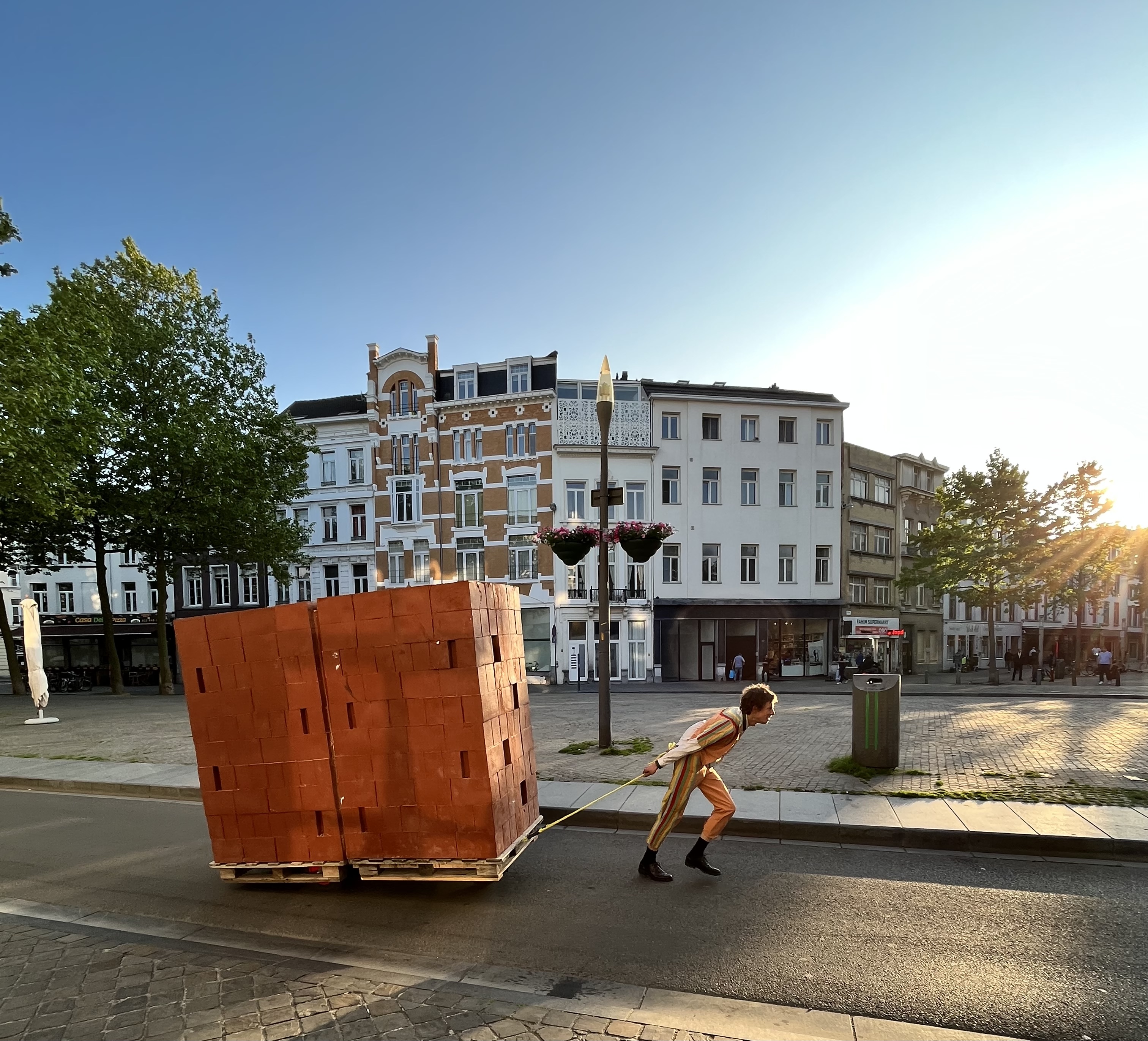

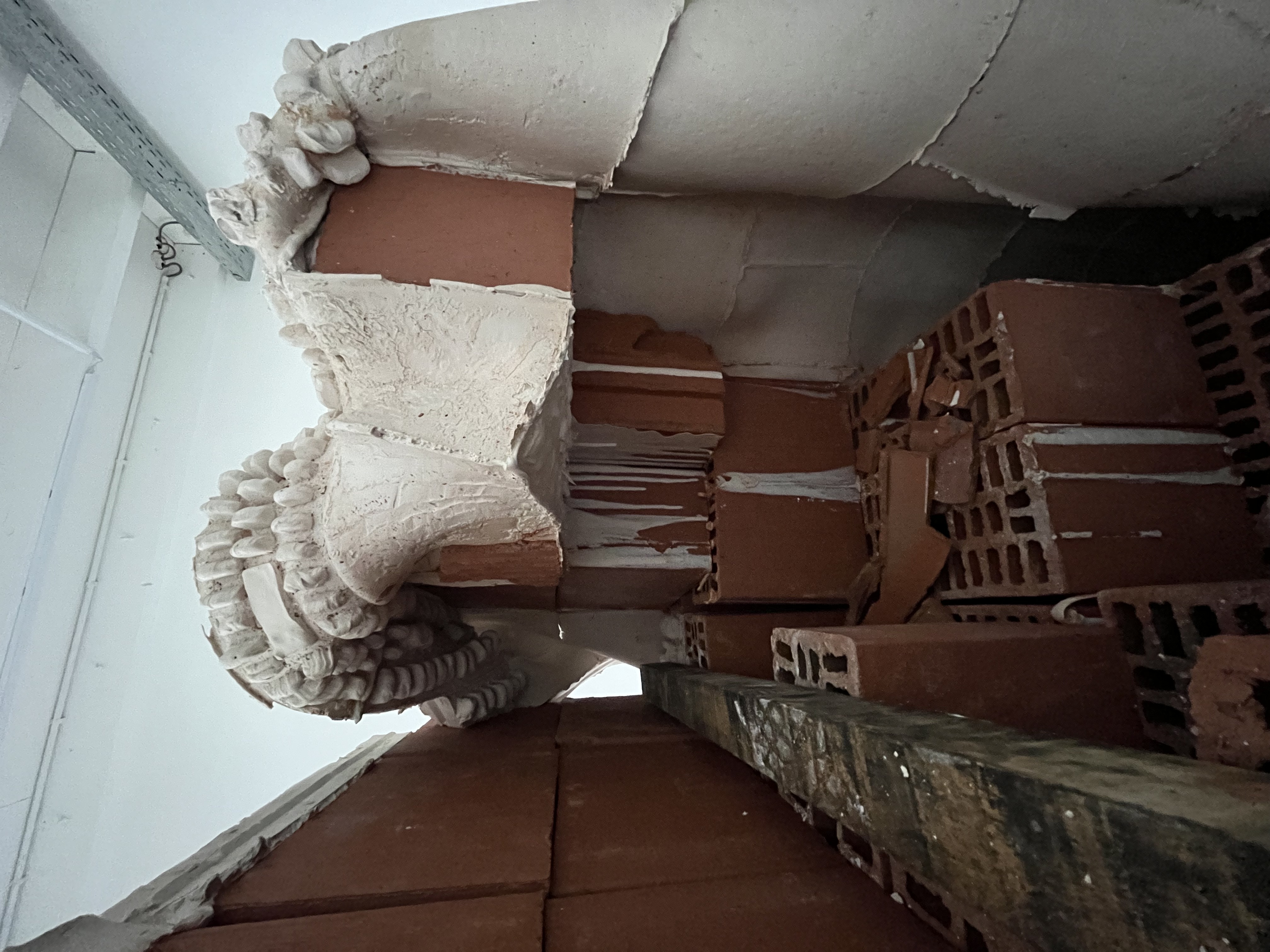
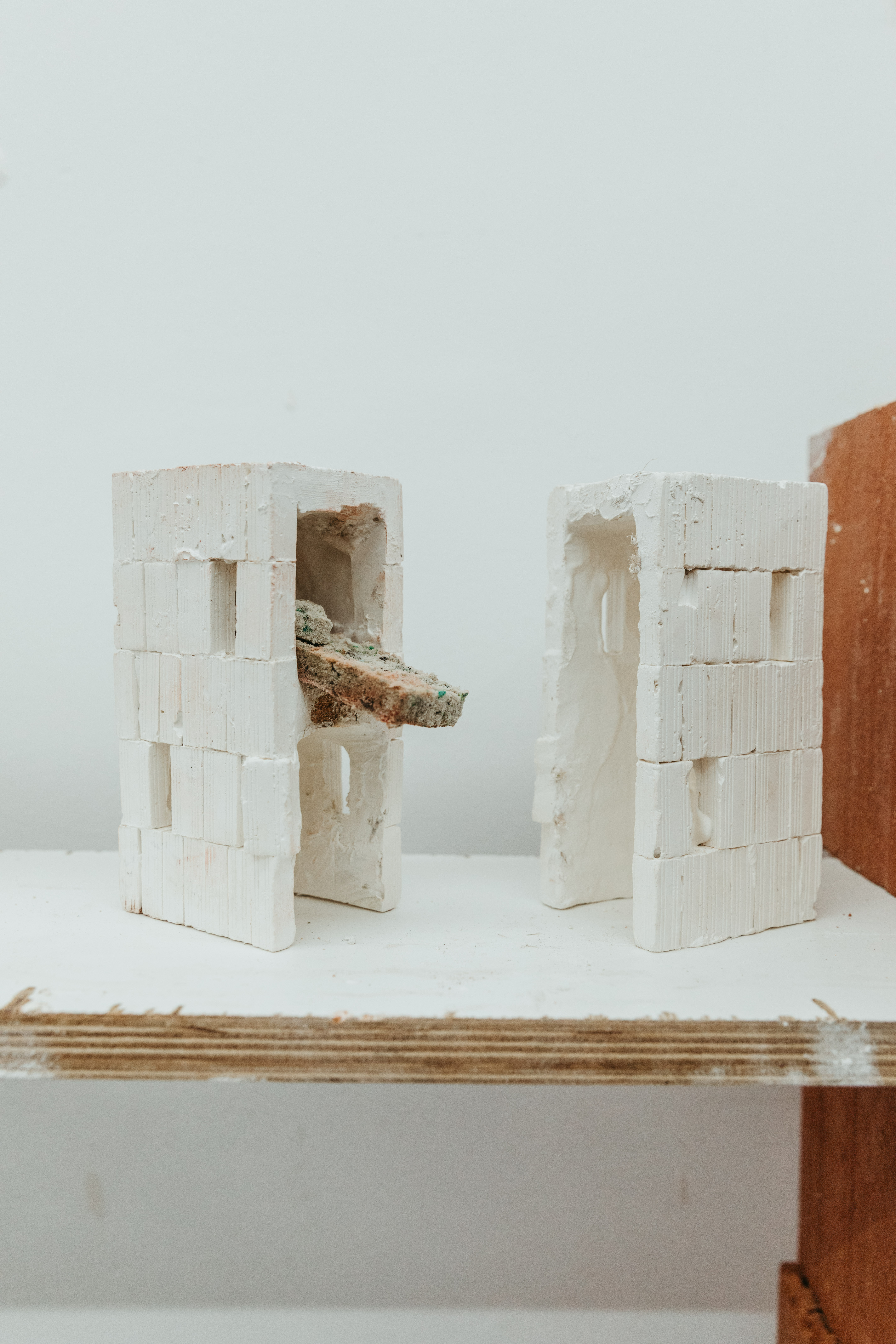
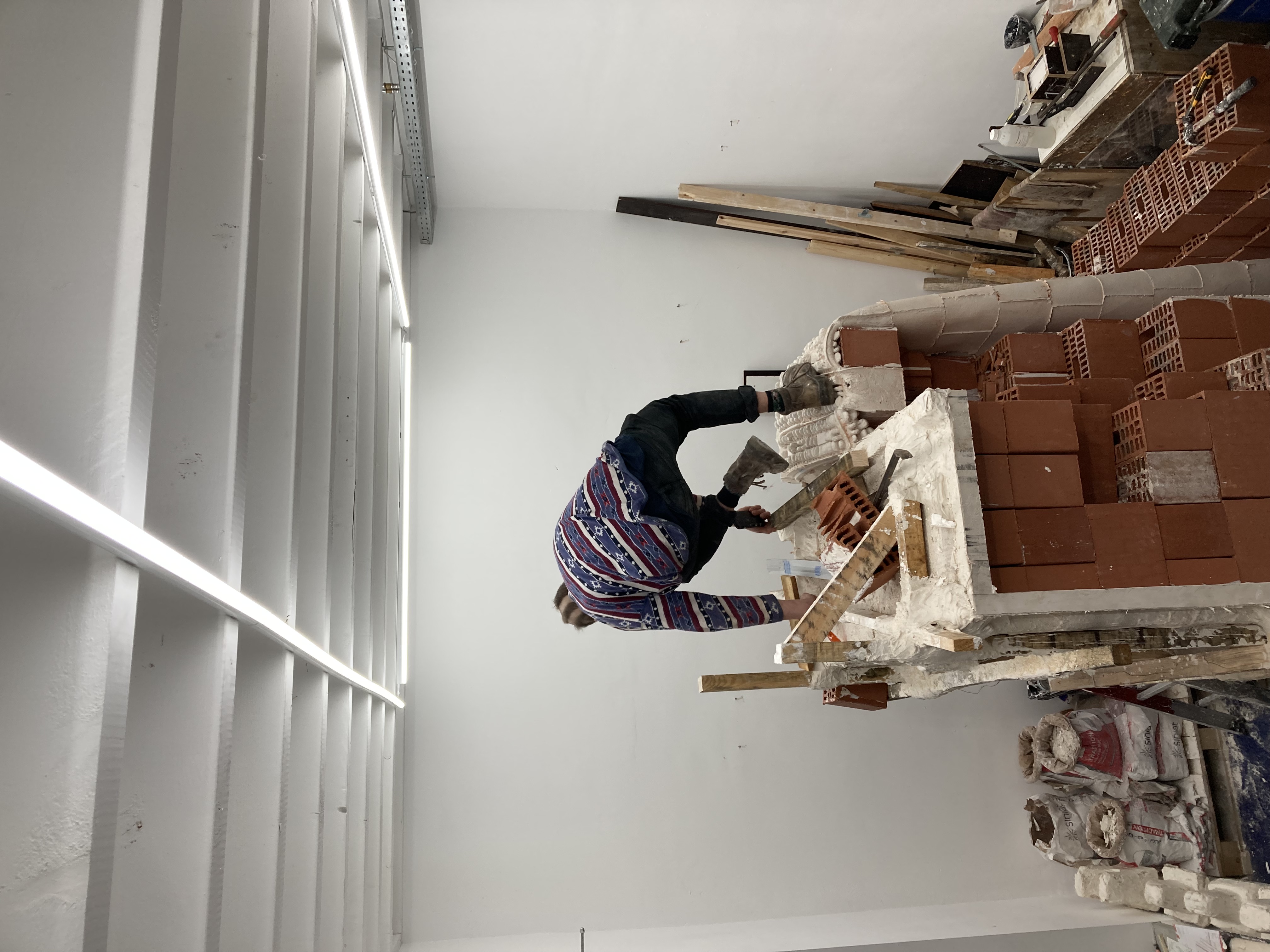
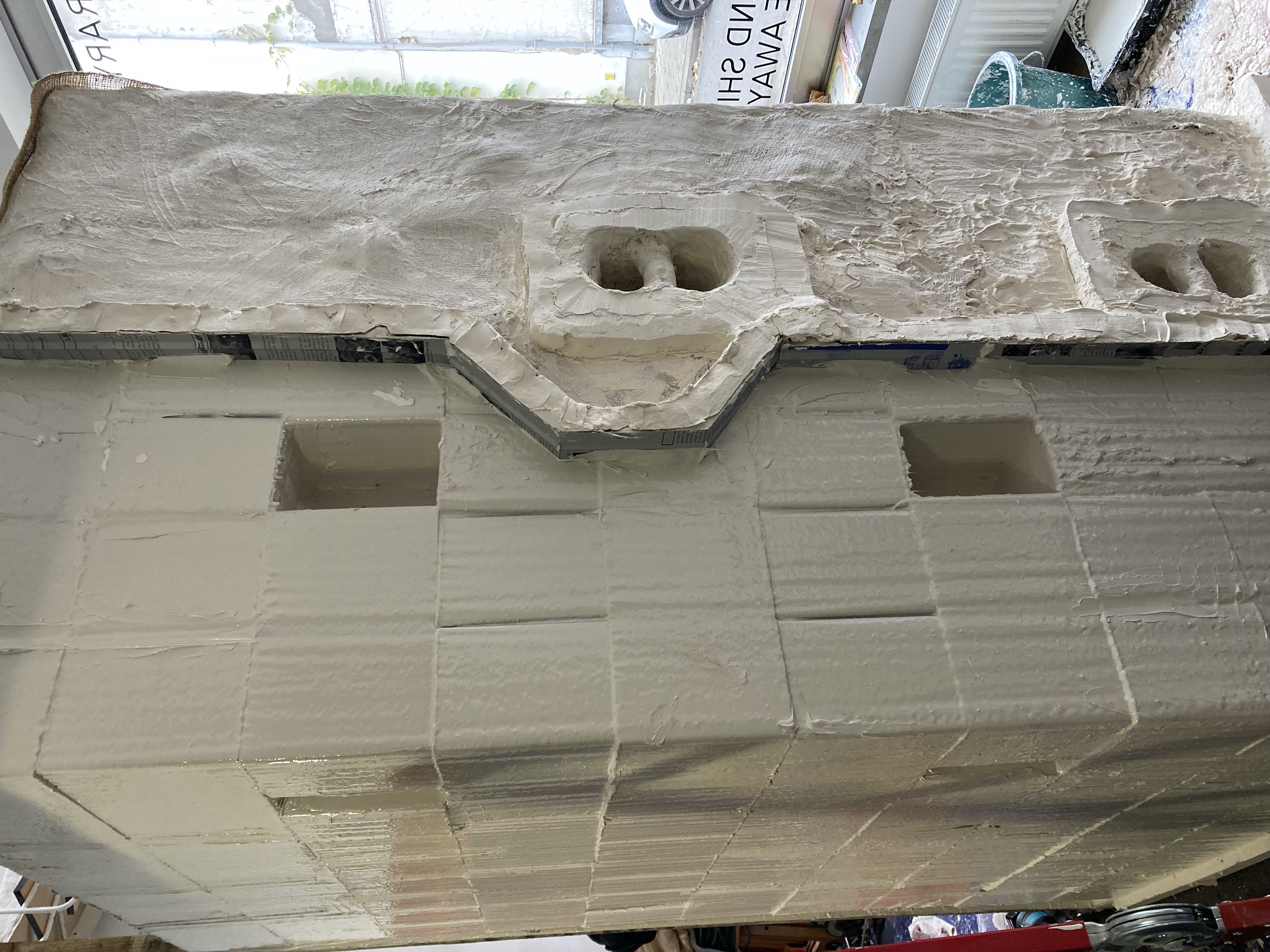

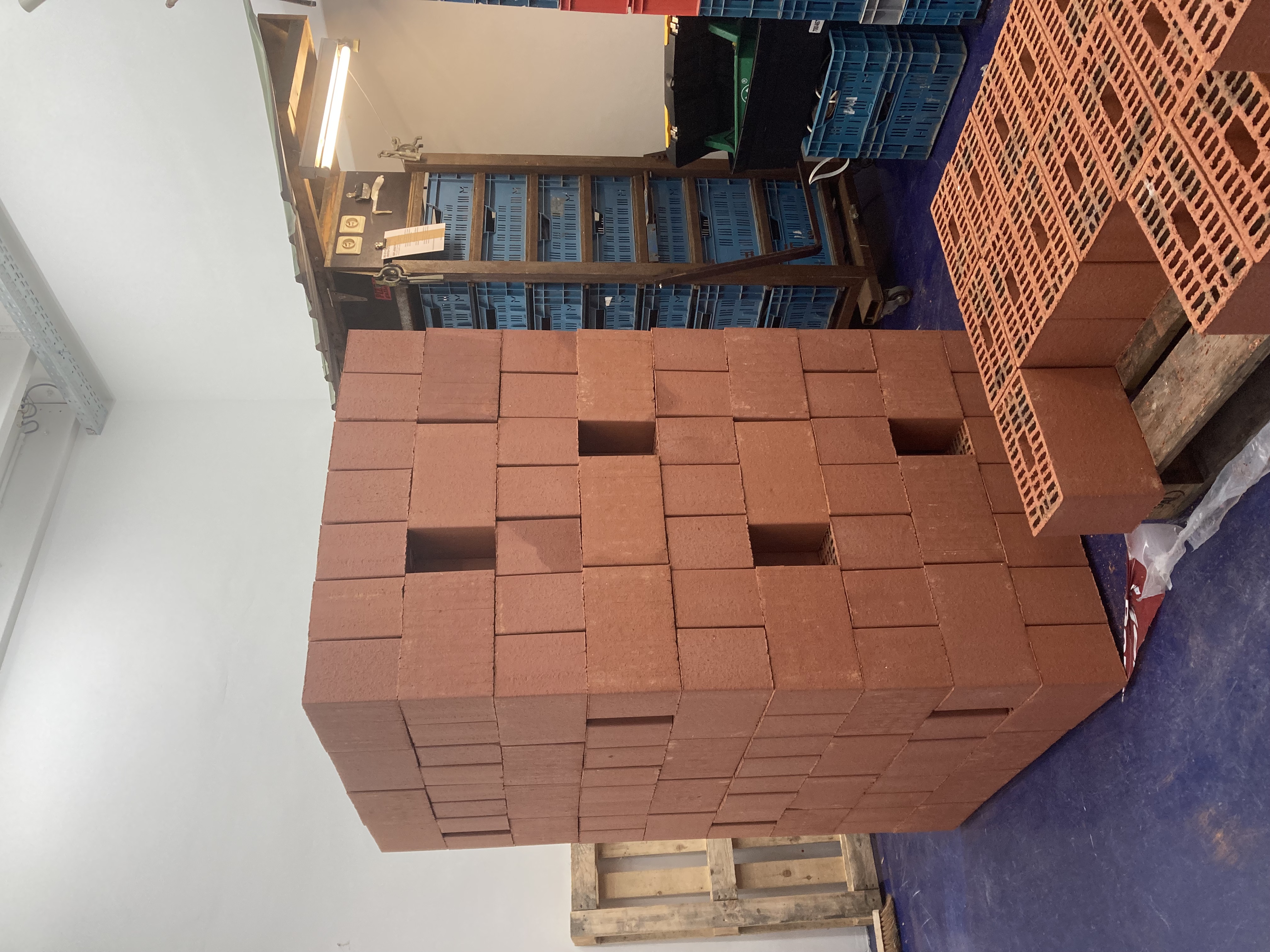
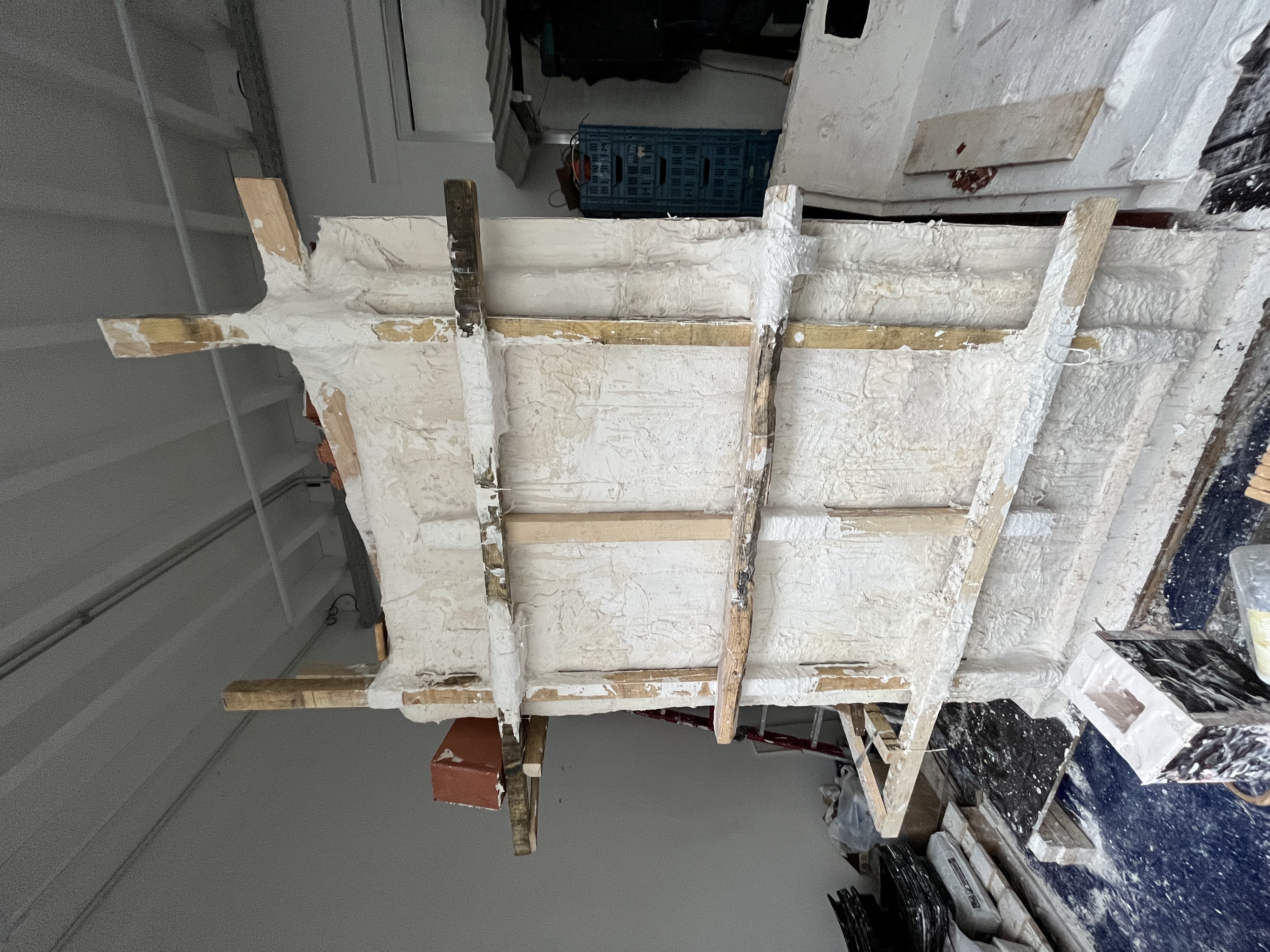
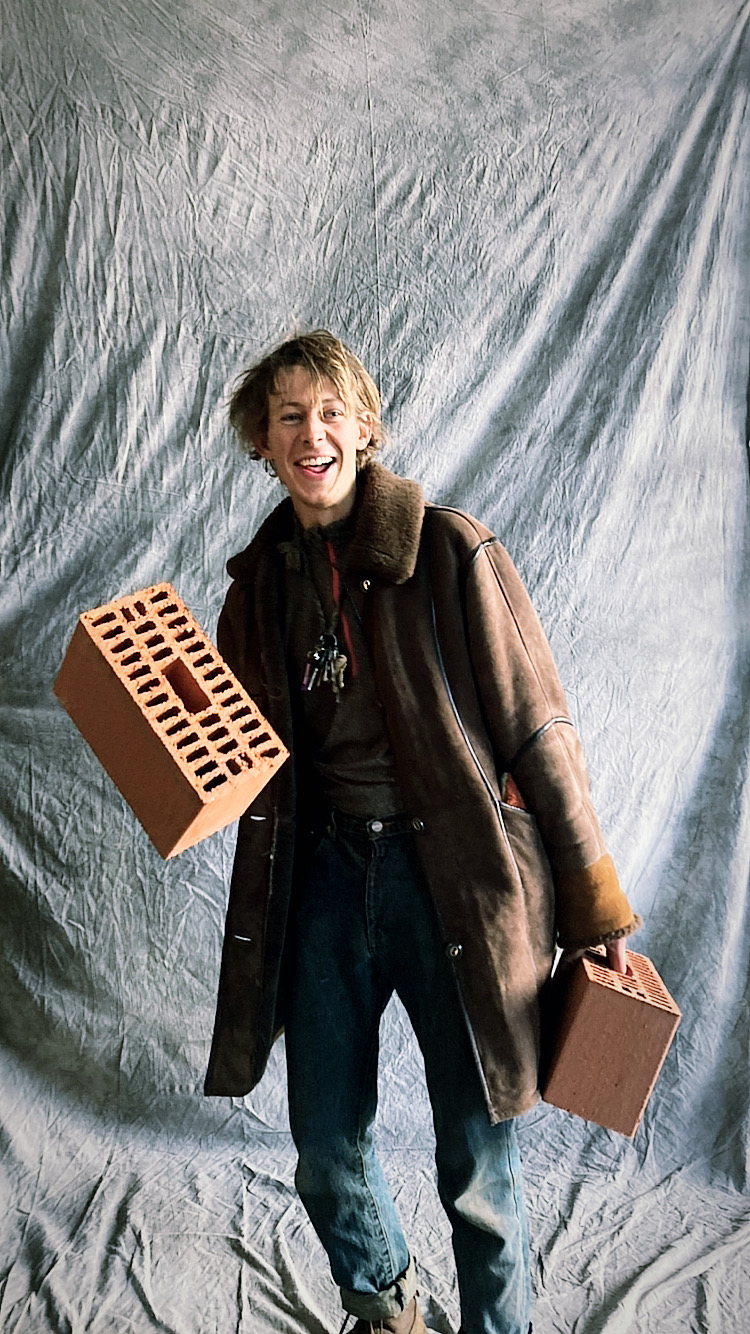
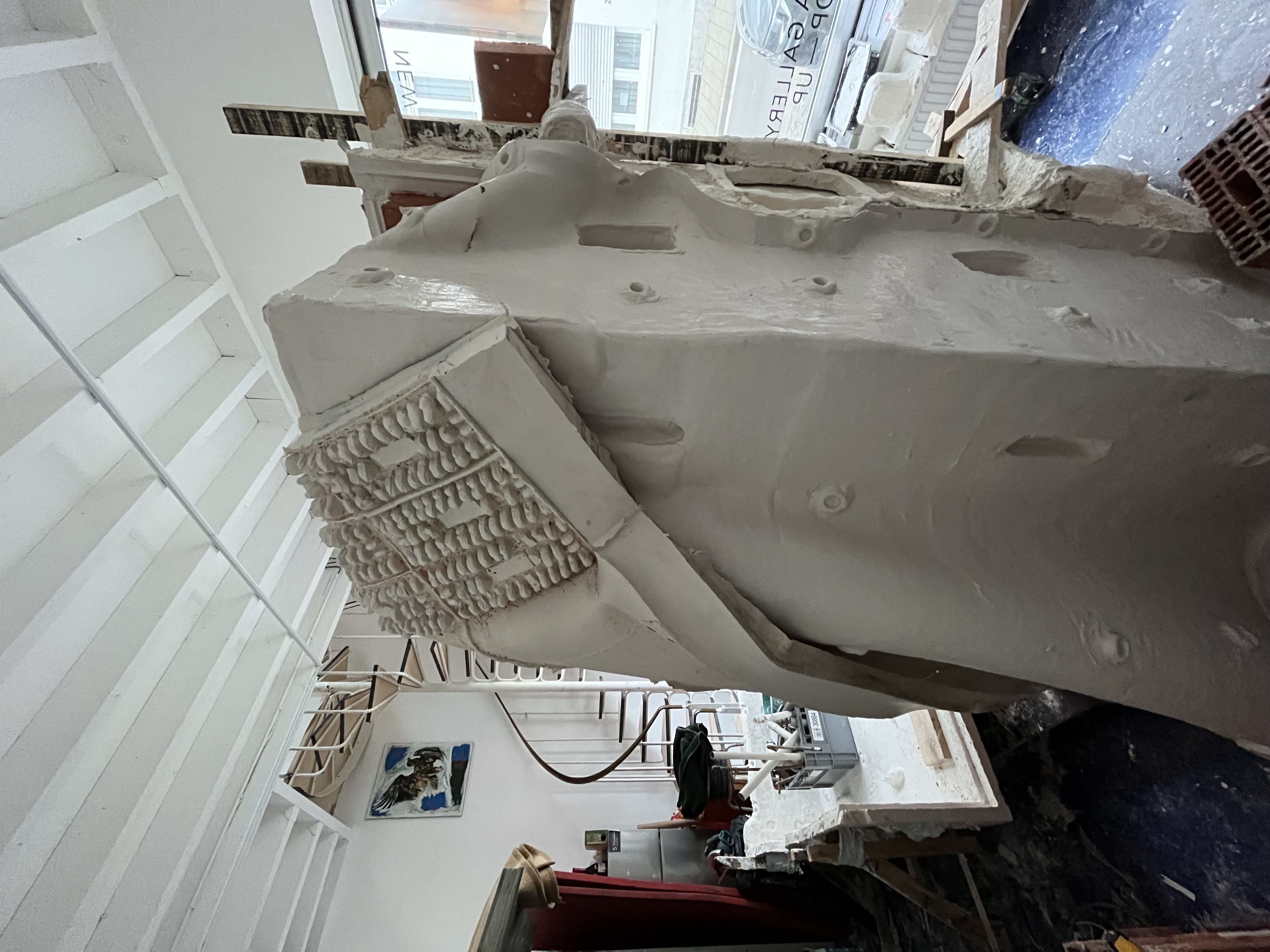

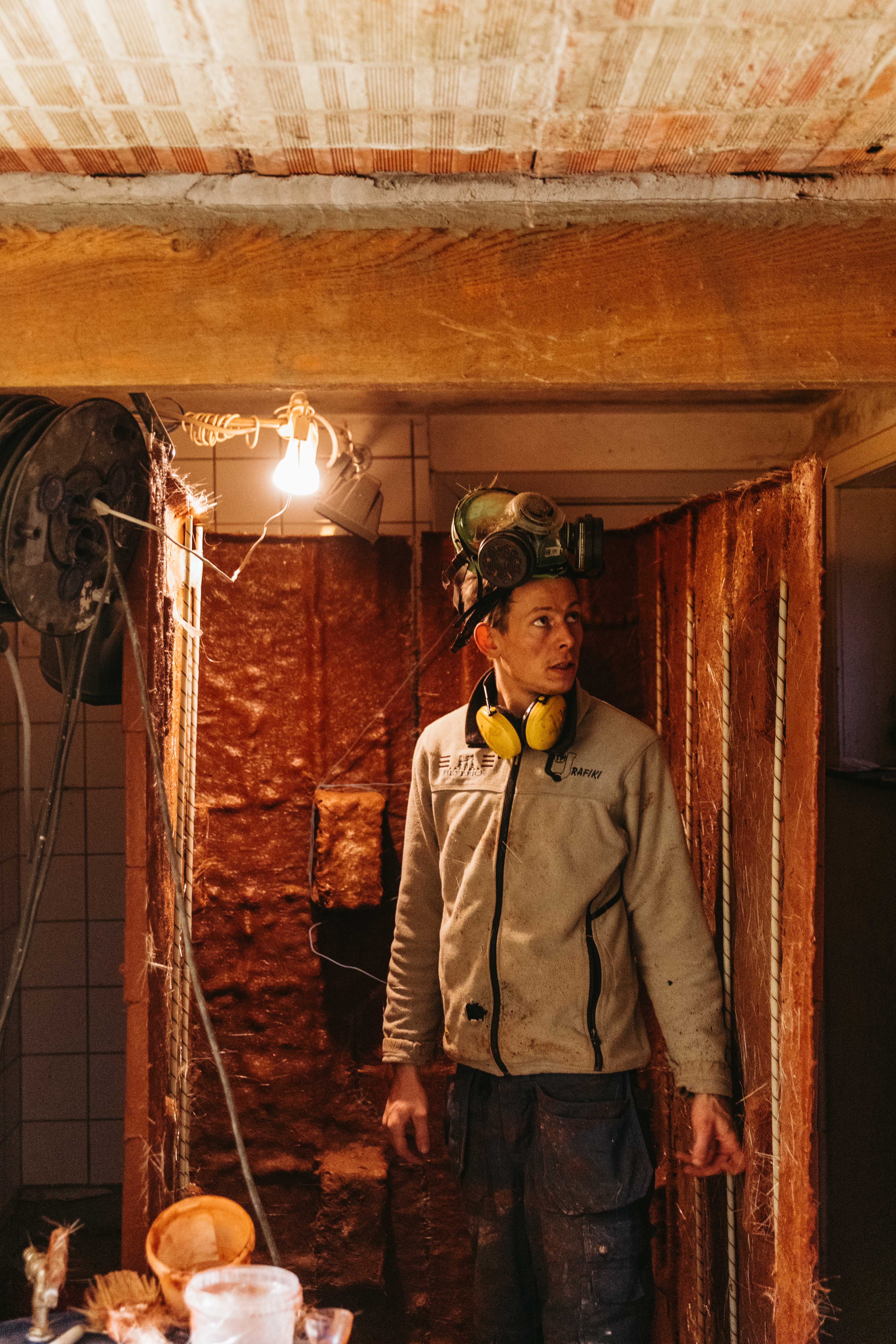
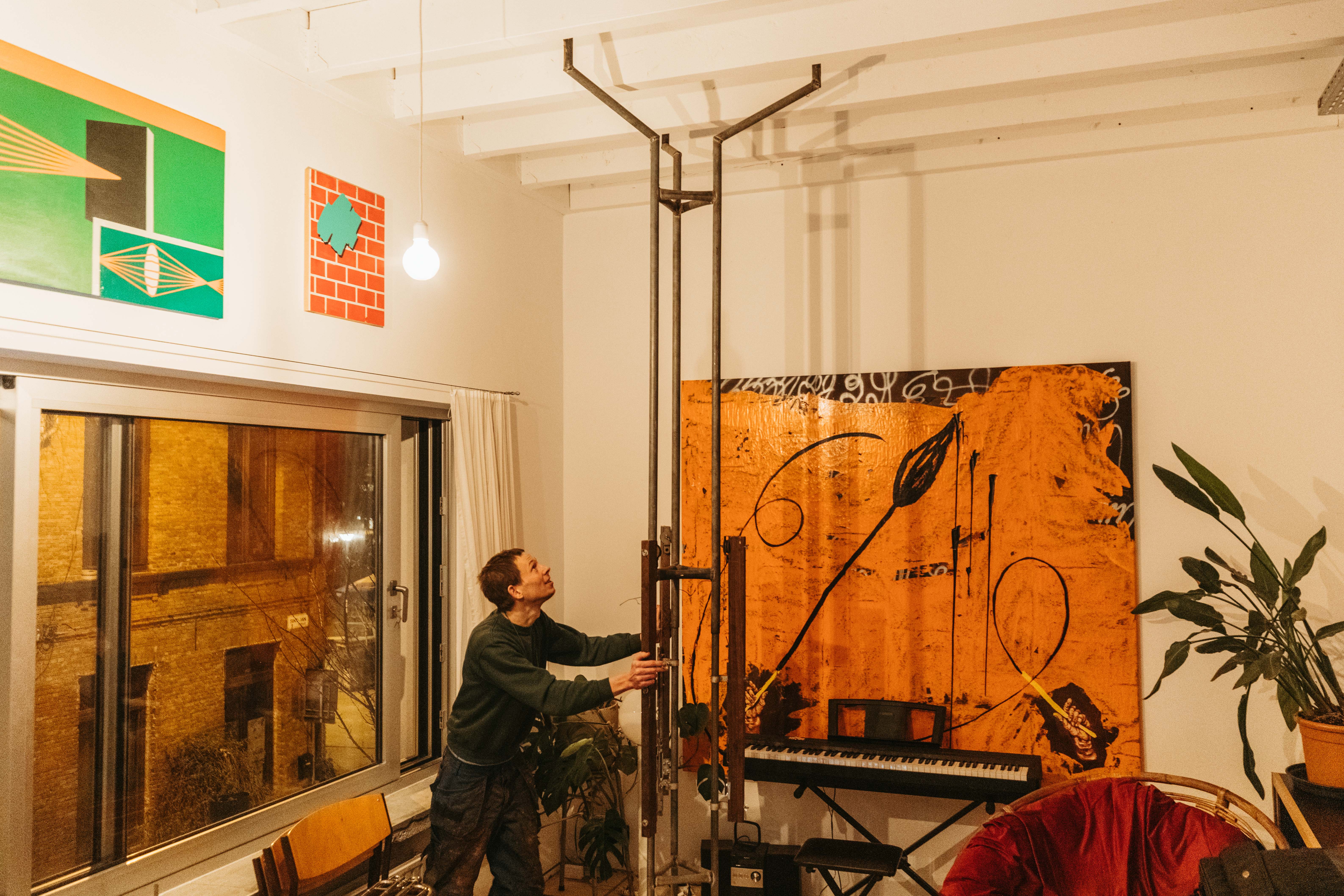
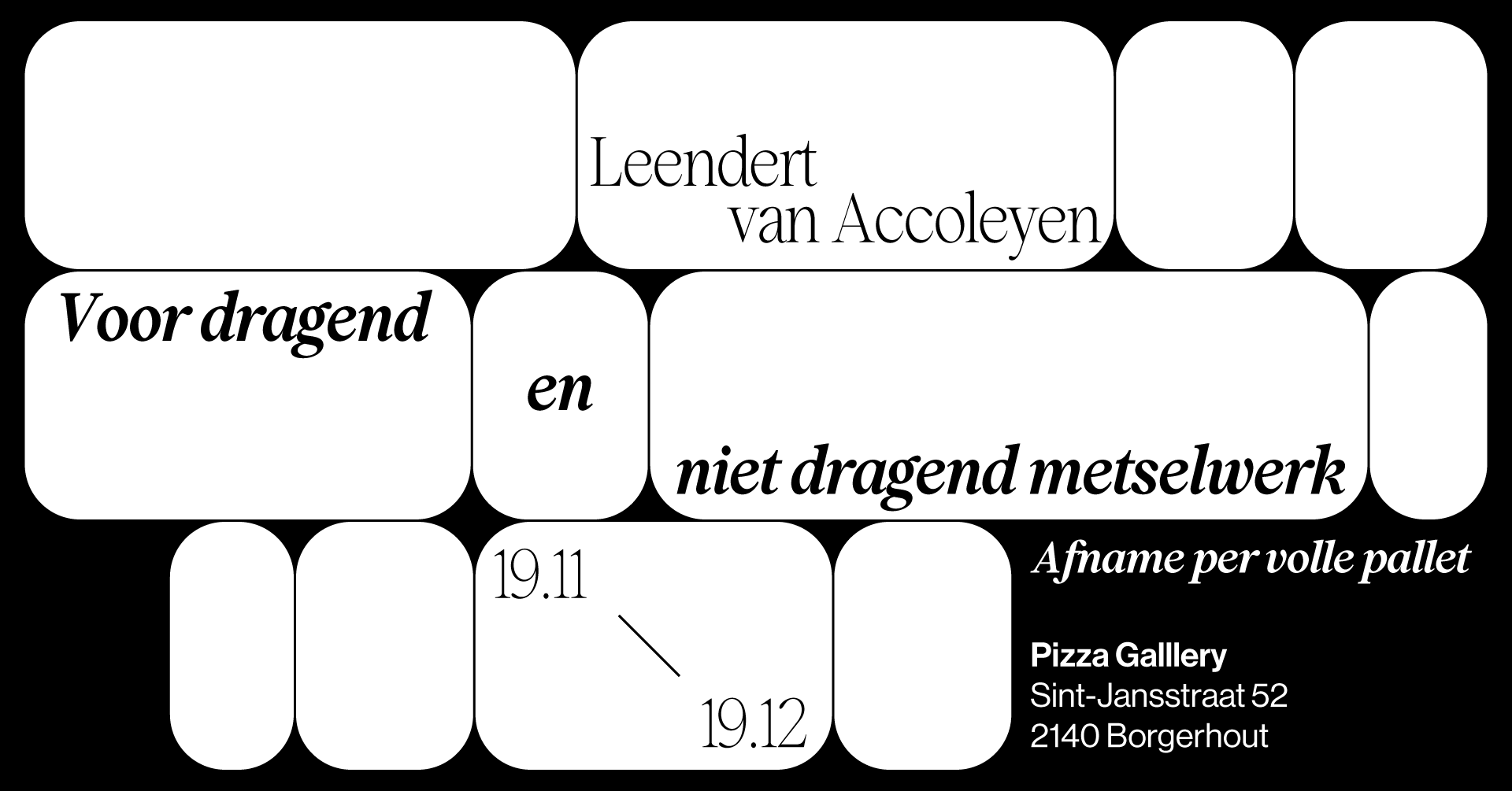
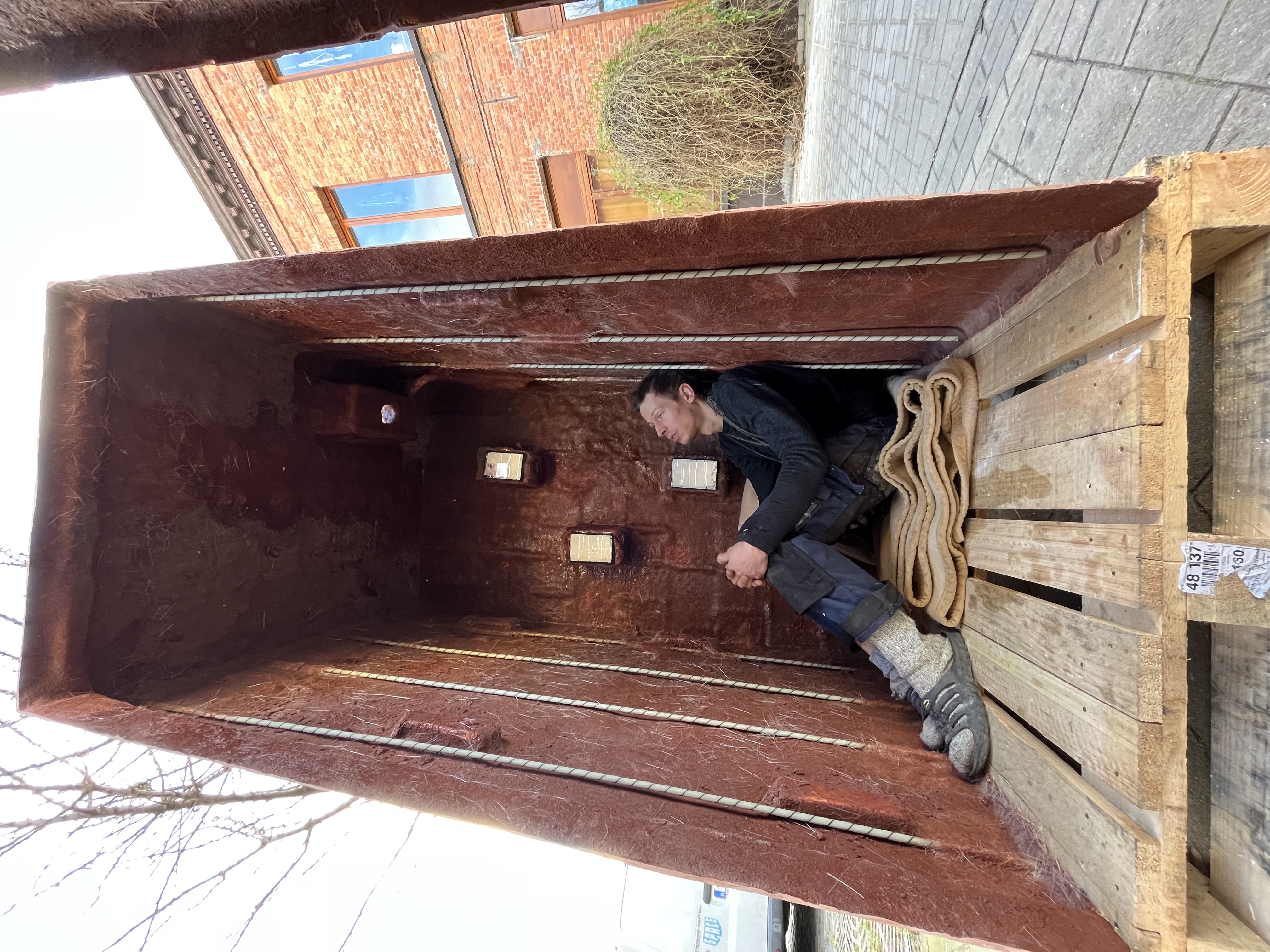
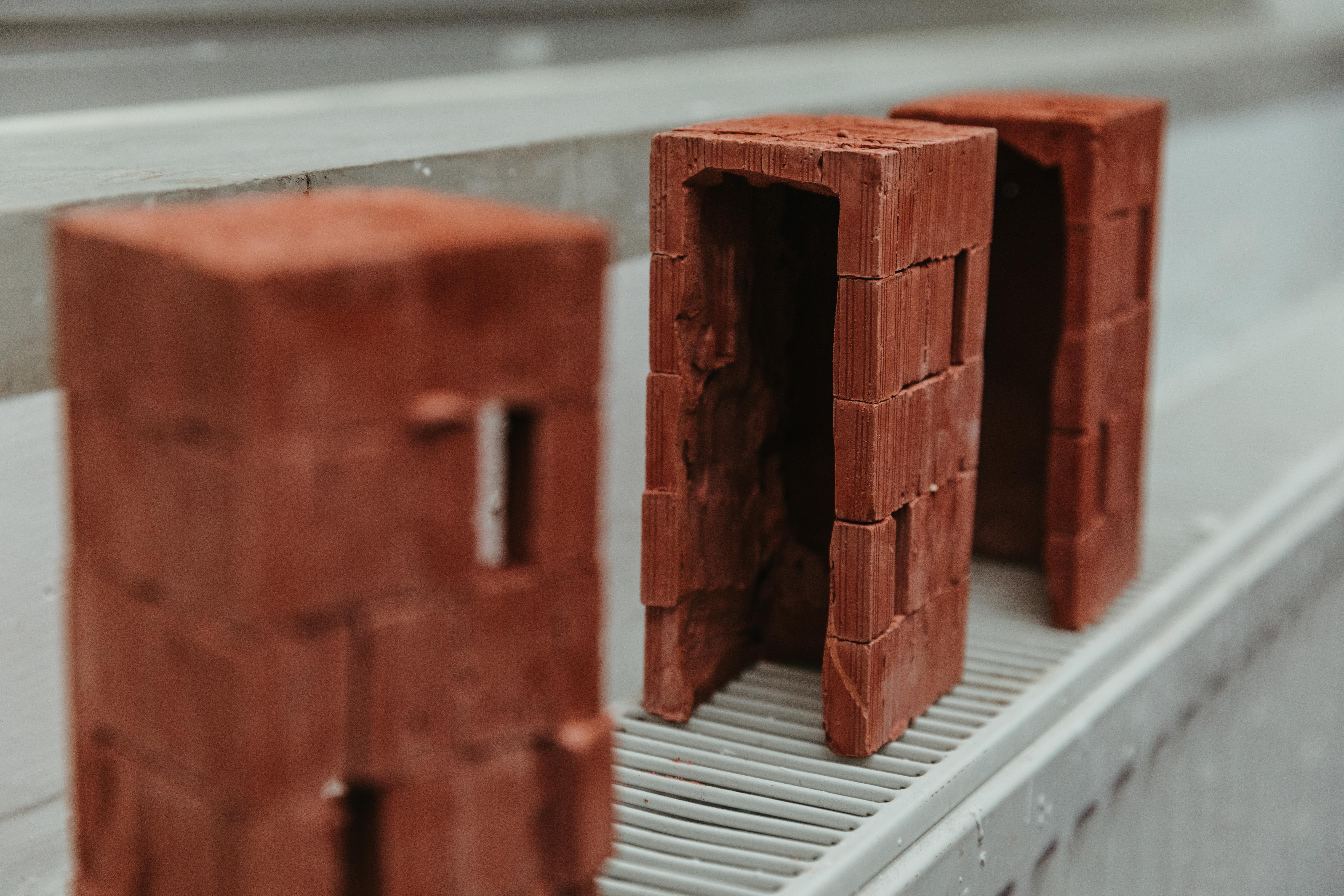
Voor dragend en niet dragend metselwerk (2022) — interview by Febe Lamiroy
It is important to stress how unproductive it is to try and separate Leendert Van Accoleyen’s artistic practice from his personal life. Having known LVA for a little over a year now, indirectly, through mutual friends and acquaintances, I’ve often come across traces he’s left in places that are familiar to me. These vestiges of his (artistic) presence include, but are not limited to: heaps of rubble, slender metal sculptures mounted on wheels, tools, salvaged wood, bricks, metal rods, and many self made or modified structures ranging from welded plant pot holders to raised bed frames resembling storks’ nests. Many of these appeared in a girlfriend’s house, whilst her dog suddenly acquired a distinctly feral look — thanks to LVA, by all accounts. However, the most prominent traces I’ve encountered were stories. Stories about an artist whose hands are permanently blackened by his work, who lived variously on a boat, in his car, and in his studio. Stories about somebody who chooses to live in the margins by rejecting conventions. Accordingly, I expected nothing less than to meet LVA somewhere ‘outside-but-not-quite-outside’ in the chilly December weather at De Koer in Ghent. I was welcomed by the ear-splitting sputters of a slightly ramshackle, faded orange forklift, LVA in the driver’s seat waving at me by way of greeting. The waving synchronised, just for a moment, with the wagging of the aforementioned dog’s tail.
We talked about the way that his life experience often triggers and feeds into his artistic practice. LVA is a charmingly open individual, he invites his audience to take a leap into his thinking and way of life. He talks about the way he needs help to realise his ideas. Collaboration is the key, every project relies on helping hands, generous offers of material, an exchange of perspectives etc. LVA is the director at the centre of this web of exchanges and interactions. That being said, he is careful to work with the people he cares most about, the people he likes.
We talked about the exhibition Voor dragend en niet dragend metselwerk at Pizza Gallery in Antwerp (07/05/2020). Both the exhibition and it’s only artwork bore the same title. The title roughly translates to: “For load-bearing and non-load-bearing masonry”. This technical information accompanies bricks as advertised on the internet, LVA immediately saw the poetic potential of this seemingly dry piece of information. Voor dragend en niet dragend metselwerk is part of the ongoing Shelter Series. In this series LVA reflects on current housing issues, and on the broader need for sanctuary. He was inspired to create an antidote to the hostile environment that cities can be, specifically responding to the urban-design strategy that purposefully develops built-in elements (studs embedded on floors, bright anti-rough sleeping lights etc.) in the public space to guide or restrict physical behaviour, often targeting people without a home.
The artist created a structure that aims to blend seamlessly into the cityscape, providing a safe space for those who might need it. LVA’s work represents a critical train of thought that examines common understandings of socio-spatial realities.
The exhibition at Pizza Gallery was atypical in the sense that the buildup and exhibition were one and the same process, occupying the gallery space for the duration of the available time. LVA simply transferred his builder-gatherer-activities to the gallery. During the opening, the shelter was activated by LVA, this happened through a bringing together a group of people and seeking connection through practice.
Voor dragend en niet dragend metselwerk consists of what appears to be two tall stacks of typical red construction bricks. A banal sight to the inattentive eye. On closer inspection it becomes apparent that there are tiny planes of glass visible between some of the tightly packed bricks. These serve as windows to look out into the streets from within the construction. Peering through the cloudy windows, the outsider quickly realises that the pallet of bricks is hollow, and that they are looking into a (small) living space. The sculpture stands on two wooden palettes, which are mounted on hidden wheels. After being wheeled to the desired ‘camping’ location the structure is lowered onto the ground. The dimensions are determined by the standardised size of a pallet on which bricks are shipped. By placing two pallets together the internal space becomes sufficiently large for a person to stand upright and lie down. LVA points out the relation with the title, “For me, the divergence of standing upright, standing in your power and the vulnerable act of lying down is of great importance. That is also partly what the ‘dragend en niet dragend’ (‘bearing and not bearing’) refers to.” The bricks were poured into a mould, to reappear as a polyester shell of themselves. When the mould of industrial bricks opens up in two compartments, one per pallet, the intention of the artwork unfolds before our eyes. The space includes a small self-welded stove, a storage compartment, a nook for sitting, and enough space for a person to sleep.
During the 18th century, Marc-Antoine Laugier wrote Essai sur l’architecture (1753), in which he discussed what he called the ‘primitive hut’, a concept that explores the origins of architecture and its practice. Laugier investigated the anthropological relationship between humans and the natural environment as the fundamental basis for creating architecture. Likewise, LVA reflects on the absolutely essential elements for an architectural shelter within the urban landscape. He says, “There are a few elements at the basis of comfort; the most important to me is warmth, protection, some storage space and it has to be a nomadic place.” Fascinated by (and perhaps envious of) the species of animals that carry their homes on their backs, LVA invented iterations of this snail-like principle. Each artwork that is part of the Shelter Series, is a musing on, or a (re)interpretation of what the artist calls ‘survival essentials’.
LVA is as skilled as he is promiscuous in his selection of building materials. Scavenged with the keen eye of a true magpie, he uses reclaimed materials and various techniques such as welding, carving, and casting, depending on what is available to him. LVA regards what is commonly seen as rubbish, refuse and debris as an opportunity. One man’s trash is another man’s treasure, as the saying goes… “This way of collecting material and manufacturing new things with it, allows me to be at my most creative, there are no limits and no pressure to create something ‘great’ as it is essentially considered waste. Working with waste gives me immense freedom” says LVA. “The polyester used to make the cast was leftover from a previous project commissioned by Lede municipality and was paid for by the municipality, so I kept the leftovers even though it is not my preferred material as it is very toxic. But polyester is an interesting material, it adapts to anything you add to it.” For the cast of Voor dragend en niet dragend metselwerk he mixed polyester with pulverised bricks (also salvaged, naturally) to achieve the right colour and a camouflage effect.
LVA’s practice transports the viewer to an alternative world, with his own experiences of living outside the norm as a starting point. He lives on the fringes of society, albeit by choice, stating, “When you live on the edge of something, this edge has become your centre, so for me it’s unproductive to think about it as living outside of something.” Stubbornly ploughing his own furrow instead of thinking about the general norm, is what makes LVA a pioneer and nonconformist. During his time as a student, something changed in the way the LVA perceived the concept of (living in) a home or a house. At the age of 23 he decided to stop renting a place to live and purchased an old-fashioned trailer instead. He lived in the vehicle for a while but experienced friction and difficulties with being too conspicuously different within the urban landscape. LVA tells me “I parked my trailer in a residential street, feeling the neighbours’ prying gazes whenever I showed myself. On top of that I got fined three times a week. That period of my life is significant for the way I think about the so-called ‘cost of living’, and subsequently about making art.” Having learned from his experience, LVA swapped the vehicle for a more incognito option, a grey van. He explained “With the van I’m hidden in plain sight. I parked in the same spot as I did with the trailer, but never had any trouble again, no fines, no uncomfortable encounters with neighbours. I was camouflaged as a hardworking Flemish bloke.” He continued, “I was so sick and tired of having to explain myself again and again, this way I chose not to stand out anymore, even though I liked the look of the old-school trailer.” Since then LVA converted the interior of the grey van into a living space, if someone took the time to peek through the window, it’d be clear as day that someone lives inside. He explains, “But I blend in with the ordinary grey van, so people don’t ask questions and tolerate me this way.” It was then that LVA realised how much value ‘hiding or being hidden’ had to offer in a densely populated region where conformity is enforced to a certain extent. When looking at Voor dragend en niet dragend metselwerk — and the Shelter Series as a whole — it’s clear that the experience had a profound impact, and the topic became a recurring motif.
The shelter might offer a lifeline in an urban environment, where being homeless means falling through the cracks. A pivotal moment that led to the conception of the Shelter Series, took place during LVA’s residency period at the Permeke library. A man without a home asked LVA if he could spend the night in the artwork — another secluded shelter-like cocoon — that he had installed. He explained, “It suddenly hit me that people without a home want to blend into the urban environment. And simultaneously that industrial and infrastructural elements are not questioned. Therefore they are an ideal cover for whoever needs to be invisible or protected. People look at the pallets of bricks and don’t question it, don’t consider the possibility that they could be hollow, let alone be someone’s sanctuary.”
Voor dragend en niet dragend metselwerk poses more questions than it is able to offer answers. It is an artwork that reminds us of the path ahead, of the work to be done and the solutions to be found. Aside from that, LVA speaks critically of the egocentric modernism of the past century. In art history many artists have developed functional objects, usually for the top tier of the class system. Some are useful, like architecture or design furniture, or even household objects for mass production (Art Deco, Bauhaus, Alessi…). It’s quite a rare thing for artists to create functional artworks for the poorest of the poor instead of the wealthy few who can afford to buy art. At this point in time, similar ideas have been brought into form with art as the carrier bag of commentary and analysis. The late science fiction writer Ursula K. Le Guin wrote about a bottle as a container of things, and the hero of a story, in The Carrier Bag Theory of Fiction (1988). Art can also be the recipient of knowledge and opinions, a humble device that contains the thing of actual value within itself. When stories and experiences aren’t poured into a carrier bag, a container, they are at risk of getting lost. With the questions he raises, the visual answers he formulates and the style he works in, LVA’s practice oscillates between a tradition of socially-engaged artists such as Krzysztof Wodiczko (1943), and a canon of whimsically functional constructions including the likes of Atelier Van Lieshout.
Even though the practice of LVA revolves around social problems — and is activistic in that sense — it does stem from a very personal point of view. LVA says, “This is important to emphasise since I haven’t yet engaged with or asked questions to the people who might want to use the shelter.” For now, Voor dragend en niet dragend metselwerk remains a part of LVA’s fantastic world of thought. The idea arose from a lust for adventure and the artist’s meditation on what his own needs were when he chose to live outside. And, realistically, don’t offer a long-term solution. Instead, I propose to read the artwork as a critique of the carelessness of our modern society and the hostility of the urban landscape. It can be read as an indictment of notoriously hostile architecture by acting as an antithesis. Its critique is double sided, it offers shelter to those who might not find it elsewhere in the city. The poetics of LVA’s work spring from the interplay between a distinct visual language, and ideas about the society we live in.
LVA gleefully tells me about the official letter he received a few weeks prior to our conversation. The letter asked him to remove the sculpture Voor dragend en niet dragend metselwerk, from its current location. The letter referred to the artwork as ‘het daklozenhuisje’ (Dutch for ‘the little homeless-shelter’). He gushed, “It’s amazing because this is what the artwork is about. I don’t think the consignor realises how happy their letter has made me. That is the whole point, in the urban context there is no room for certain (social) interventions. It confirms the necessity of the project.” LVA has already begun calling in favours, making plans and gathering materials for the next work in the Shelter series. He is planning to build a larger structure, once again camouflaged within the urban environment, to house his working space. Unlike Voor dragend en niet dragend metselwerk he is fully intending to let it face the rigours of life on our streets.
